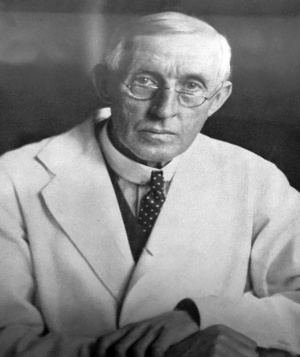Paper - Contributions to the embryology of the marsupialia 5: Difference between revisions
(Created page with "{{Header}} {{Ref-Hill1918}} {| class="wikitable mw-collapsible mw-collapsed" |- ! Online Editor |- | thumb|alt=Eastern quoll|Eastern quoll ...") |
mNo edit summary |
||
| Line 17: | Line 17: | ||
|} | |} | ||
{{Historic Disclaimer}} | {{Historic Disclaimer}} | ||
=Some observations on the early development of ''Didelphis Aurita''= | |||
[[File:James Peter Hill.jpg|thumb|alt=James Peter Hill|link=Embryology History - James Hill|James Peter Hill]] | |||
(Contributions to the Embryology of the Marsupialia, V.) | |||
By | |||
J. P. Hill, H.Sc., | |||
Jodrell Professor of Zoology and Comparative Anatomy, University of London, University College. | |||
Revision as of 12:55, 7 September 2018
| Embryology - 24 Apr 2024 |
|---|
| Google Translate - select your language from the list shown below (this will open a new external page) |
|
العربية | català | 中文 | 中國傳統的 | français | Deutsche | עִברִית | हिंदी | bahasa Indonesia | italiano | 日本語 | 한국어 | မြန်မာ | Pilipino | Polskie | português | ਪੰਜਾਬੀ ਦੇ | Română | русский | Español | Swahili | Svensk | ไทย | Türkçe | اردو | ייִדיש | Tiếng Việt These external translations are automated and may not be accurate. (More? About Translations) |
Hill JP. Some observations on the early development of Didelphis Aurita (1918) Quart. J. Micr. Sc. 63:91.
| Online Editor | ||||||||
|---|---|---|---|---|---|---|---|---|
|
This historic 1918 paper by James Peter Hill describes marsupial development of the big-eared opossum Didelphis aurita.
| ||||||||
| Historic Disclaimer - information about historic embryology pages |
|---|
| Pages where the terms "Historic" (textbooks, papers, people, recommendations) appear on this site, and sections within pages where this disclaimer appears, indicate that the content and scientific understanding are specific to the time of publication. This means that while some scientific descriptions are still accurate, the terminology and interpretation of the developmental mechanisms reflect the understanding at the time of original publication and those of the preceding periods, these terms, interpretations and recommendations may not reflect our current scientific understanding. (More? Embryology History | Historic Embryology Papers) |
Some observations on the early development of Didelphis Aurita
(Contributions to the Embryology of the Marsupialia, V.)
By
J. P. Hill, H.Sc.,
Jodrell Professor of Zoology and Comparative Anatomy, University of London, University College.
Template Page - Notice removed when completed.
The big-eared opossum (Didelphis aurita)
| Historic Disclaimer - information about historic embryology pages |
|---|
| Pages where the terms "Historic" (textbooks, papers, people, recommendations) appear on this site, and sections within pages where this disclaimer appears, indicate that the content and scientific understanding are specific to the time of publication. This means that while some scientific descriptions are still accurate, the terminology and interpretation of the developmental mechanisms reflect the understanding at the time of original publication and those of the preceding periods, these terms, interpretations and recommendations may not reflect our current scientific understanding. (More? Embryology History | Historic Embryology Papers) |




